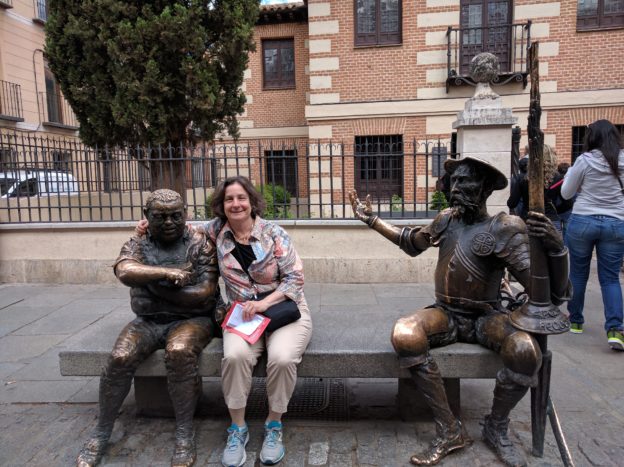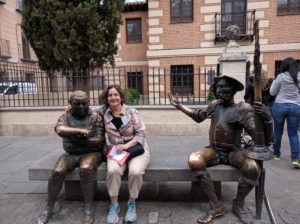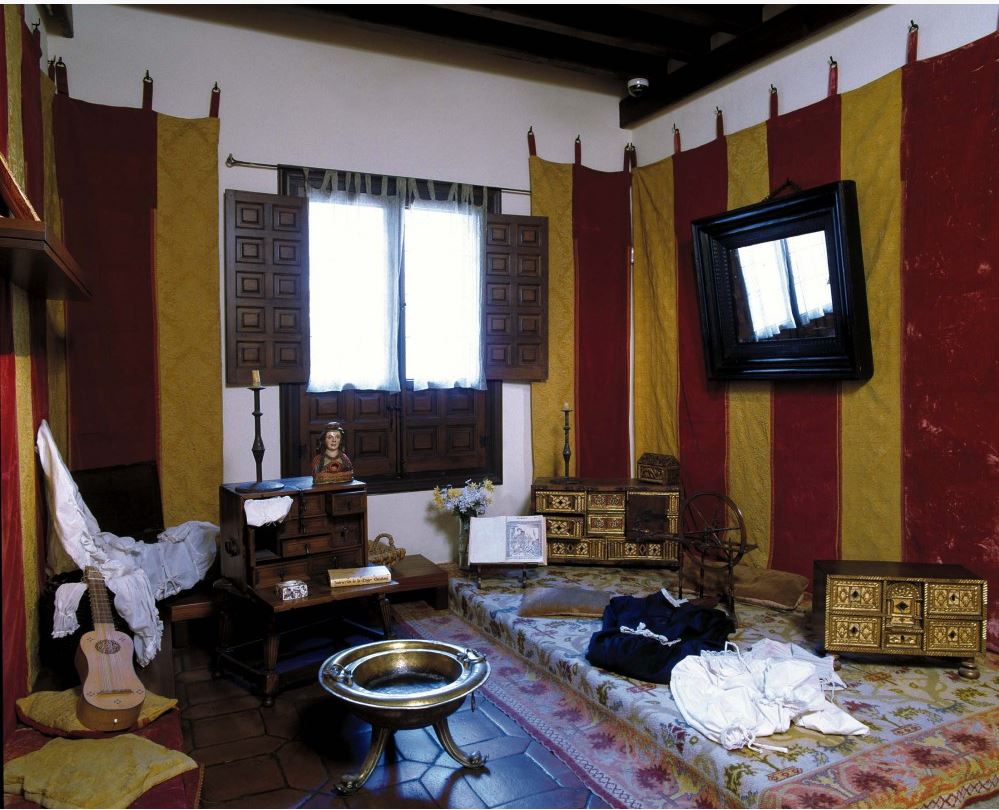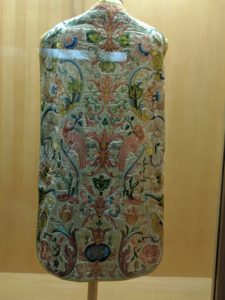I’ve just returned home from a glorious visit to the Caribbean. My husband and I resolved to do nothing but relax during our stay, and for the most part we managed to honor this commitment. However, my passion for Spanish linguistics is irrepressible! Even while lazing on the beach, I couldn’t resist taking note of several linguistically interesting passages in one of the Spanish books I tossed into my suitcase: a collection of three Novelas ejemplares by Miguel de Cervantes, the author of Don Quijote.
Cervantes published these novelas — actually, short stories — in 1613, between the two volumes of Don Quijote. El licenciado Vidriera, the first story I read, takes place in the academic and courtly communities of Salamanca and Valladolid. La gitanilla focuses on an itinerant gypsy tribe, while Rinconete y Cortadillo describes the initiation of two teenage boys into a gang of street criminals in Seville. The three stories thus offer diverse perspectives on the people and places of Golden Age Spain.
I will be writing several blog entries about the Novelas ejemplares in the upcoming days. Here are the topics I’ll cover; I’ll add links to the individual entries as I write them:
- the use of the noun color with feminine gender;
- sentences that, while lacking the explicit Spanish words for ‘former’ and ‘latter’ (aquel and este), follow the Spanish convention of putting ‘latter’ before ‘former’;
- camarada, a nice example of a noun ending in -a that can be either masculine or feminine;
- an explicit reference to the dialectal phenomenon of ceceo;
- two examples of gustar used in a ‘forwards’ rather than its normal ‘backwards’ fashion;
- a case study in how to learn a new word (the innocent-sounding piedeamigo);
- the antiquated word hestoria;
- exciting (to me) examples of the future subjunctive “in the wild”.




